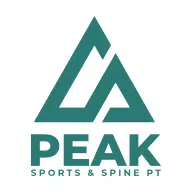

OK, so you decided it was time to work on your ab's. Maybe it was some nagging back pain or a moment of inspiration from a TV commercial, comment from a spouse or an indentation from your waist band, but you decided you wanted to work on your ab's and sit ups were the "go to" exercise. You go "old school", hit the floor and start doing sit ups right? WRONG. Or at least I hope to convince you this is wrong.
I've been a physical therapist for over twenty years. This means I've had "the talk" with people almost every day for that length of time. What's "the talk" you ask? It's the, "why sit-ups are a bad idea" talk. For some reason everyone envisions sit-ups or some version of them as the only abdominal exercise out there. So my goal for you is to better understand your mid section and how to help it, why sit ups harm it and provide some much better alternatives for your efforts.
First of all let's talk honestly about the sit up. Unless you are a wrestler who needs that movement to save yourself from being pinned, a gymnast or diver who needs that movement to tuck into a ball and spin in the air, you never move this way. Except for getting out of bed in the morning, this is something we just don't do.
There is a rule in human movement science called the Specificity Principle, sometimes also called the SAID principle. It stands for specific adaptations to imposed demands. It means the body gets good, specifically, at what it does most often. In other words training your ab's to pull the ribs towards your guts will make them better at pulling your ribs towards your guts. So any hope that doing sit ups will help your ab's protect your back while you rake the yard will go unfulfilled. Same muscles, different skill. Kind of like studying math in hopes your Spanish will get better. Same brain different skill.
In addition, there is evidence you are likely setting yourself up for more back pain in the future. Lying down and repeatedly flexing the spine wears out your discs. When you curl up your trunk in that manner you expose the discs to sheer force. Discs are great at dispersing force but not sheer force. When exposed to sheer, the wall of the disc begins to fail and it is this wall that prevents the gelatinous nucleus of the disc from bulging outward towards the nerves. When the disc bulges out towards the nerves it often becomes something you're acutely aware of!
In case you were doing sit ups for the vanity side of the equation. We all like to look good and a nice 'six pack' of ab's is a rare and wonderful thing to see. However, the reason it's rare is because a six pack requires a really low percentage of body fat which is rare in and of itself. It isn't from a lack of doing sit ups. In order for that six pack to really show, body fat needs to be reduced to about 10% for men and 16% for women. So the sit ups won't help you there either.
In summary, doing sit ups won't train your body to move better, won't do much for your back pain and may even make it worse and won't help you look better in your bathing suit. So why does everyone do them? Good question. My best guess is that we all learned sit ups in middle school PE class and since most people don't have formal education in exercise they just keep doing what they learned. I'm happy to be the person to tell you we know more than that now.
Before we begin the exercise alternatives, I must first state the fact that any one muscle or muscle group will not make or break your back pain and a little extra strength from sit ups or anything else may help a little. However, in my experience back pain is most commonly from a lack of normal movement or control in one part, like the hips, that then requires compensations some where else, like in the spine. It is these compensations that cause tissue break down and eventually pain.
That being said, below are 15 terrific spine saving alternatives if you are craving additional abdominal muscle work. This is certainly not an exhaustive list but should provide a challenge for everyone. They are organized based on what you have available to you beginning with just an empty room. Some like the plank are quick and easy to learn, others like the kettlebell swing take practice.
These are also shown with the expressed understanding that if they cause you pain you will stop and that you will not hold your breathe. Try to breath through your nose with the tongue on the roof of your mouth. This will help the breathing pattern be more diaphragmatic which is helpful for your core as well. Anytime you are holding your breath it is your body telling you that it senses a lack of stability from the muscles and it is trying to use air pressure to help. Keep breathing and learn how to stabilize your core authentically with your muscles. That way you can stabilize and breathe, instead of stabilize or breathe. Enjoy.
A great empty room abdominal exercise is the plank. There are so many variations to this we can make but the key component to all of them lies in the name. Your body should be as straight as a board the whole time. I am looking for a straight line from the ear to the ankle. Although many variations are possible here are a few that even a beginner can do for at least a short time. In my opinion, once you can do any of these for a solid minute move on to the next.
Basic front plank: Have elbows under shoulders, toes shoulder width and hold
Basic side plank: Have elbow under shoulder, feet stacked body parallel with the wall and hold
RKC plank: Have forearms against each other, toes and heels against each other. Lock out gluts and quads as hard as you can then hold
Plank with arm elevated: Same as basic front plank but elevate one arm and hold then switch
Plank with leg elevated: Same as basic front plank but elevate one foot and hold then switch
Plank with opposite arm and leg elevated: Same as basic plank but elevate arm and opposite leg
External resistance provides an additional opportunity to challenge your muscles coordination, control and strength. Here a few more options for those of you that have weights available.
⇥
⇥
⇥
If available to you this large ball provides an elevated unstable surface to exercise upon that is a very helpful tool. Its tendency to want to roll away forces the person to figure out how to control it. Muscles deep in your core work hard to stabilize you without you even thinking about them. But make sure the ball is pumped up. These balls need to be well inflated to be effective.
⇥
⇥
⇥

